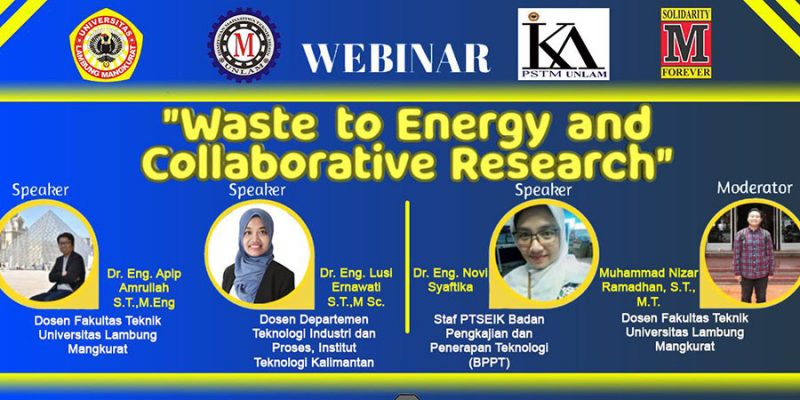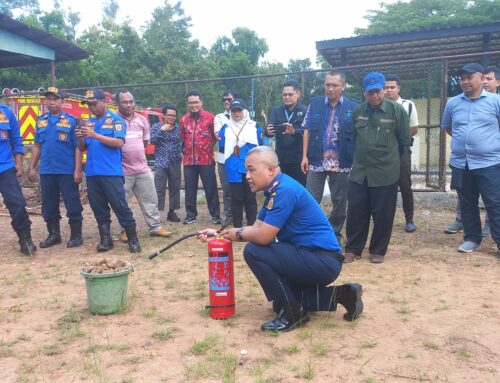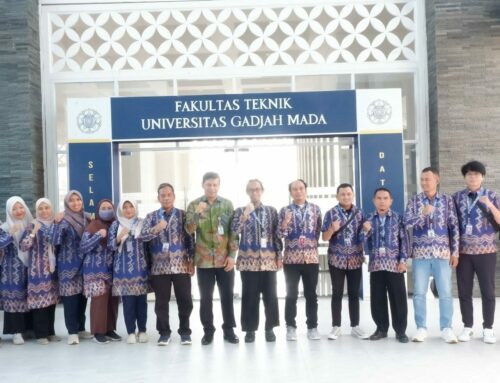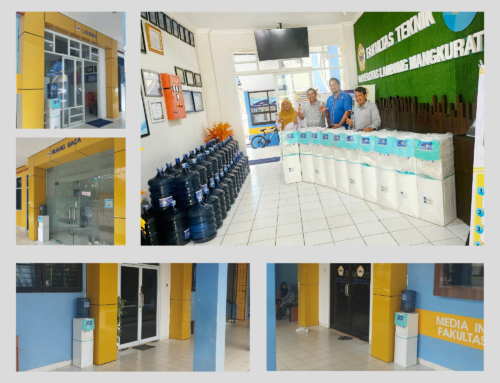The Mechanical Engineering Study Program, Faculty of Engineering, Lambung Mangkurat University together with the Mechanical Engineering Student Association, Faculty of Engineering, Lambung Mangkurat University held the first Webinar of the Mechanical Engineering Study Program on 23 September 2020 via Zoom Meeting and YouTube Live. This Webinar with the theme "Waste to Energy and Collaborative Research" was attended by 285 participants from all over Indonesia. The 115 participants included Lambung Mangkurat University, Sari Mulia University, PLN Institute of Technology, POLISMA, ITS, Tidar University, Malang State Polytechnic, Mataram University, Riau Environment and Forestry Service, and many more.
This Webinar event was opened by Mr. Prof. Dr. H. Sutarto Hadi, M.Si., M.Sc. as Chancellor of Lambung Mangkurat University, attended by Mr. Dr. Bani Noor Muchamad, ST, MT as Dean of the Faculty of Engineering, Lambung Mangkurat University, was also attended by the Head of the ULM Mechanical Engineering Study Program, Mr. Dr. Rachmat Subagyo, ST., MT. IPP, and many lecturers and alumni from the ULM Faculty of Engineering. Head of the ULM Mechanical Engineering Study Program, Mr. Dr. Rachmat Subagyo, ST., MT. IPP. in his speech, he said that this webinar event was a forum and means of exchanging knowledge and information about collaborative research activities waste to energy specifically for research development in Kalimantan itself, where there is a lot of industrial waste and biomass that has not been utilized. This event is also a series of events from the ULM Mechanical Engineering Student Association, namely the Borneo Mechanical Fair (BMF).
The webinar "Waste to Energy and Collaborative Research" was moderated by Mr Muhammad Nizar, ST, MT who is also a lecturer at ULM Mechanical Engineering. In this Webinar, 3 resource persons were presented, all of whom were PhD graduates from Hirsohima University, Japan, namely (Dr. Eng. Apip Amrullah, ST, M.Eng), (Dr. Eng Lusi Ernawati, ST, M.Sc), and (Dr. Novi Syaftika, S.Sc., M.Eng). Mr. Dr. Eng. Apip Amrullah, ST, M.Eng (Lecturer in Mechanical Engineering, Faculty of Engineering, ULM) as resource person I explained about "Waste to Energy Breakthrough in Waste to Fuel Solution". He explained that Waste Production is 150,000 tons/day. The more the amount of waste increases, the higher the poverty rate (where there is rubbish, there are scavengers, etc.). Ironically, this has not been followed by developments in waste processing technology. The solution to processing waste into energy is the construction of a PLTSa (Trash Power Plant). But the most important thing is also to change society's paradigm from "waste to energy" to "waste is energy". Technologies that can be used in waste processing are: thermal, mechanical & thermal, thermo-chemical, biochemical.
Mrs. Dr. Eng Lusi Ernawati, ST, M.Sc (Lecturer at the Department of Industry and Process, Kalimantan Institute of Technology) as resource person II explained about "Silica (SiO2) from Agro-Waste for Energy Applications". He said that there would be an increase in electricity consumption from 2018 – 2027 from 908 kwh/year to 1500 kwh/year. This is in line with the growth of the human population which continues to increase every year. With a solar radiation intensity of 4.8 kwh/m2 per day, solar cells can be put forward as an alternative energy source for generating electrical energy. Increasing solar cell efficiency by using ARC (Anti Reflective Coating) film, efficiency reaches >95%. To reduce reflectivity, you can use silica (SiO2) particles which can be obtained from rice husks (agro-waste) which have gone through the gasification and pyrolysis process stages.
Mrs. Dr. Novi Syaftika, S.Si., M.Eng (PTSEIK Staff, Agency for the Assessment and Application of Technology (BPPT)) as Resource Person III, explaining "Waste to Energy and Collaborative Research through the perspective and experience at PTSEIK BPPT". According to him, innovations related to waste to energy are Technological Innovations from POME (Palm Oil Mill Effluent) waste; Bioenergy technology innovation; Coal, Petrochemical and Oil and Gas Innovation; and Integrated Industrial Salt Technology Innovation (PRN). The potential for Palm Oil Waste is very large; from the entire processing process of 10% into Oil, and 90% into biomass in the form of biogas produced from POME (Palm Oil Mill Effluent) which goes through a purification process.
It is hoped that in the future there will be general activities of this type that can be participated in by the wider community from various circles to increase awareness of the importance of processing waste into renewable energy and looking for alternative environmentally friendly energy sources.





